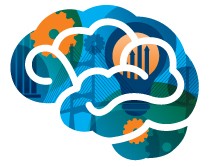Effects of Labeling Learning Disabled Students / Presenter: Shelley Merritt-Dietz
The significant goal of this paper will be to explore and discuss the positive and negative effects of labeling learning disabled students in the public school systems. This paper will bring to light the benefits associated with labeling. More specifically the parent/teacher expectations, mainstreaming, (IEP) Individualized Education Plan, and specialized instruction. Under current law to receive services through public school special education programs students must be identified or classified as having a disability. Labeling students provides assistance to professionals to classify and evaluate information for research purposes. Resources and funding are often tied to specific classifications. Labeling students also provides an opportunity for advocacy groups to promote programs and push forward legislation that may be beneficial to disabled students. This paper will also provide detail on several negative aspects associated with labeling such as peer issues, self-esteem, bullying and the stigma associated with learning disabilities. A student who is labeled as learning disabled may be ridiculed or singled out. This may lead to difficulties with peers and cause the student to withdraw and become isolated. Labeling may also contribute to low self-esteem and feelings of helplessness due to a student’s inability to compete in the classroom setting. Teacher/parent expectations may also create feelings of inadequacy in learning disabled students. The aim of this paper is to discuss in detail several of the issues related to labeling and to discuss ways to better assist students in managing the challenges they face due to labeling. It is evident that labeling is necessary to better assist students with the academic and emotional tools necessary to be successful but, proactive steps can be taken to minimize some of the negative effects of labeling. I look forward to discussing many of these scenarios in my research paper.
